9 October 2015–28 February 2016
The National Museum – Architecture, Norway
The aim of the Architecture in Comic Strip Form exhibition was to shed light on an unusual type of architectural visualization. The exhibition showed how architects use comic strips to create their own works, collaborate with other professionals, communicate their ideas and concepts, and convey architectural criticism.
Although traditional architectural drawings are well suited for identifying problems, visualizing solutions, and providing precise information about technical details, scale, and design, they are often difficult for laypeople to interpret. Many architects have therefore chosen to use the comic strip medium’s distinctive mix of words and images to supplement their conventional visual representations. The genre’s characteristic imagery, onomatopoeia, speech and thought balloons, and capacity to present a variety of cross-sections and perspectives are used to create stories about people’s encounters with architecture. The combination of text and imagery makes it possible to express a complex message in a readily understandable and succinct manner, in a visual style that is accessible to a wider audience.
The exhibition presented around eighty works, most of which are comics that architects have created by themselves, commissioned, or collaborated on with comic strip artists. Most of the works were taken on loan by the National Museum especially for this exhibition and spanned a wide range of different countries and eras. A defining selection criterion has been that the comic strips have consisted of several panels that together tell a story.
Some of the works, such as Le Corbusier’s Lettre à Madame Meyer (1925) and Archigram’s Space Probe / Zoom (1964), are not comic strips in a strict sense but are rather kindred examples of words and images being used together. Works by comic strip creators such as Winsor McCay (Little Nemo in Slumberland, 1911), François Schuiten and Benoît Peeters (Brüsel, 1992), and Chris Ware (Building Stories, 2012) were also represented because they have influenced the way architects have used the comic strip medium. Architectural models, books, animation films, and interviews helped flesh out the relationship between architecture and comics and to add variation and depth to the exhibition.
The exhibition was divided into seven thematic categories: Inspiration, Subjective reportage, Imagination, Concept, Critique, Design Tool, and Presentation. This categorization intended to clarify how and why architects use the comic strip medium. All seven categories exploited the communicative potential of comic strips, while the genre’s ability to tell stories, construct reality, and present complex statements comes variously to the fore. Selected works by Jean Nouvel, OMA, Drawing Architecture Studio, Alexandre Doucin, Håkon Matre Aasarød, Fréderic Bézian, Wes Jones, Jimenez Lai, and others illustrated the tremendous variety in architectural comics – from small, hand-drawn comics to large formats and digitally created works.
Architect Håkon Matre Aasarød, who was in charge of the architecture of the exhibition, created a three-dimensional interpretation of the typical characteristics of comics by using strips and frames.
The exhibition was inspired by Mélanie van der Hoorn’s book Bricks & Balloons: Architecture in Comic-Strip Form.
On the occasion of the exhibition, the National Museum published a catalogue of the same name in both English and Norwegian.
Curators: Anne Marit Lunde and Mélanie van der Hoorn
Project Manager: Nina Frang Høyum
Exhibition Design: Vardehaugen / Håkon Matre Aasarød
Graphic Design: Bielke & Yang
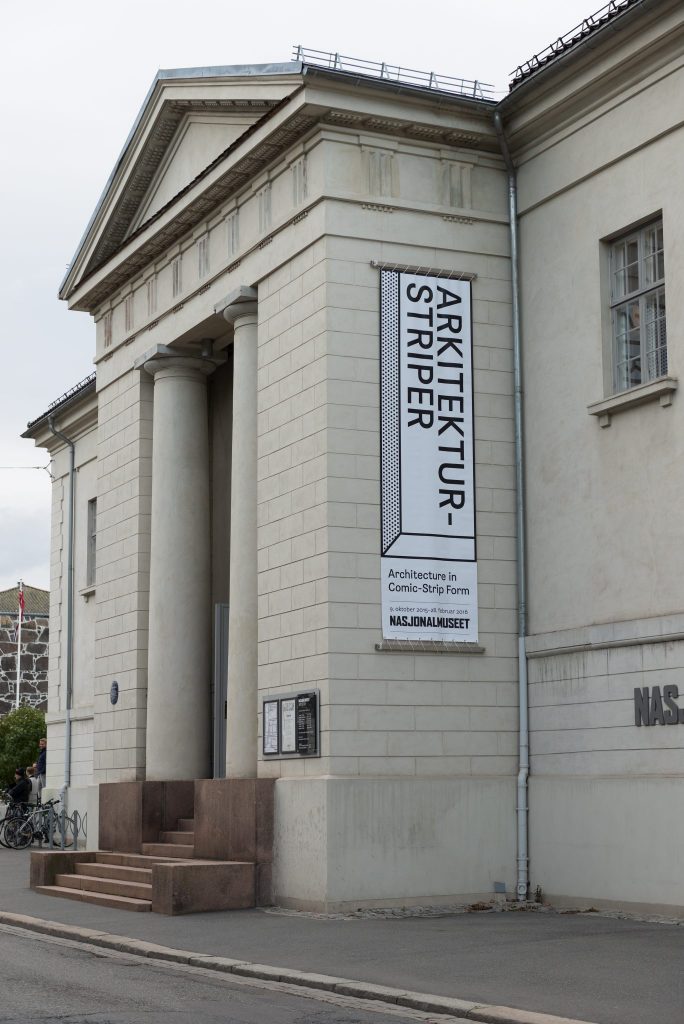
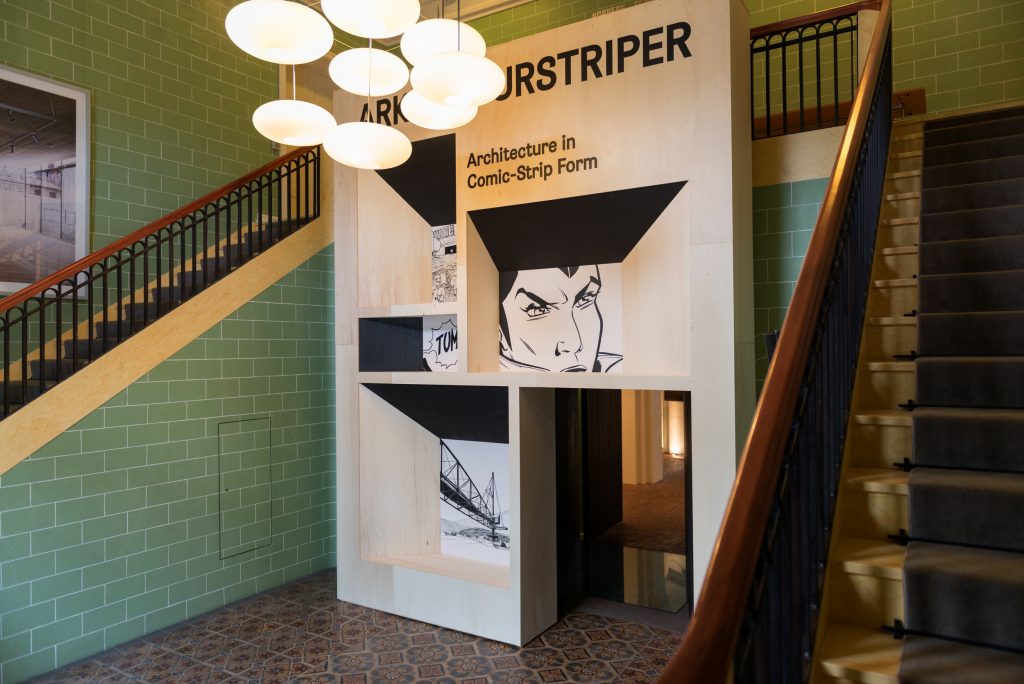
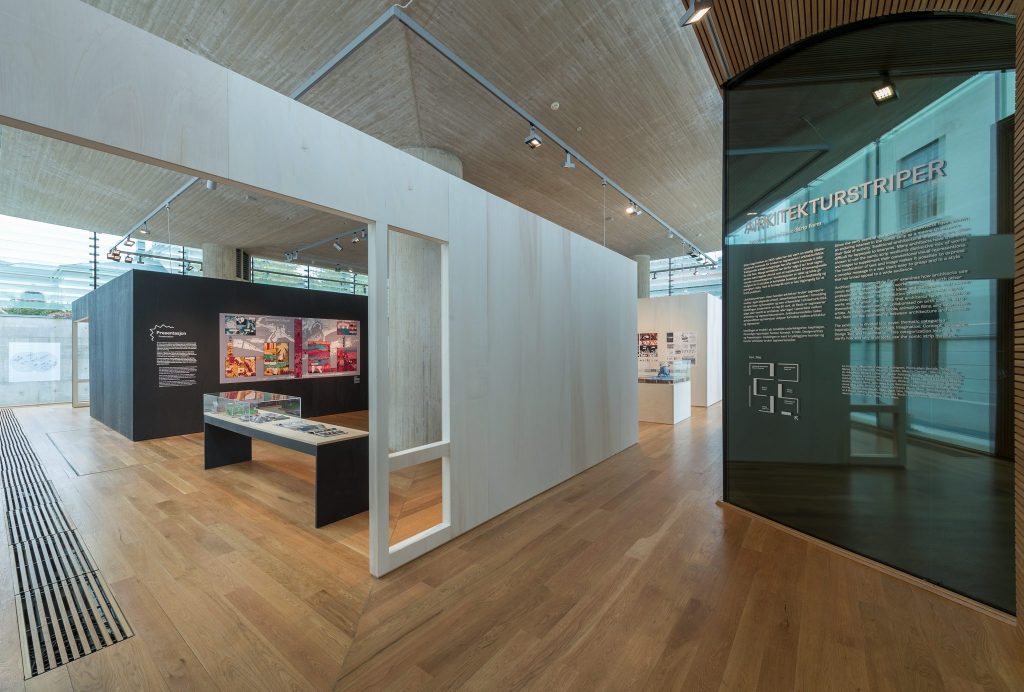
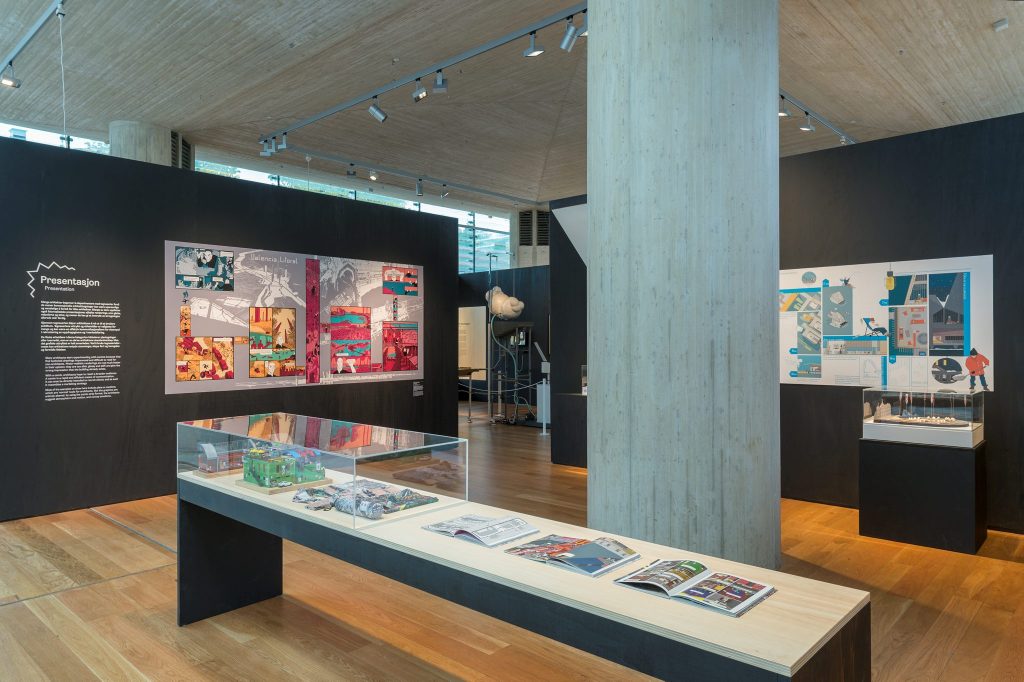
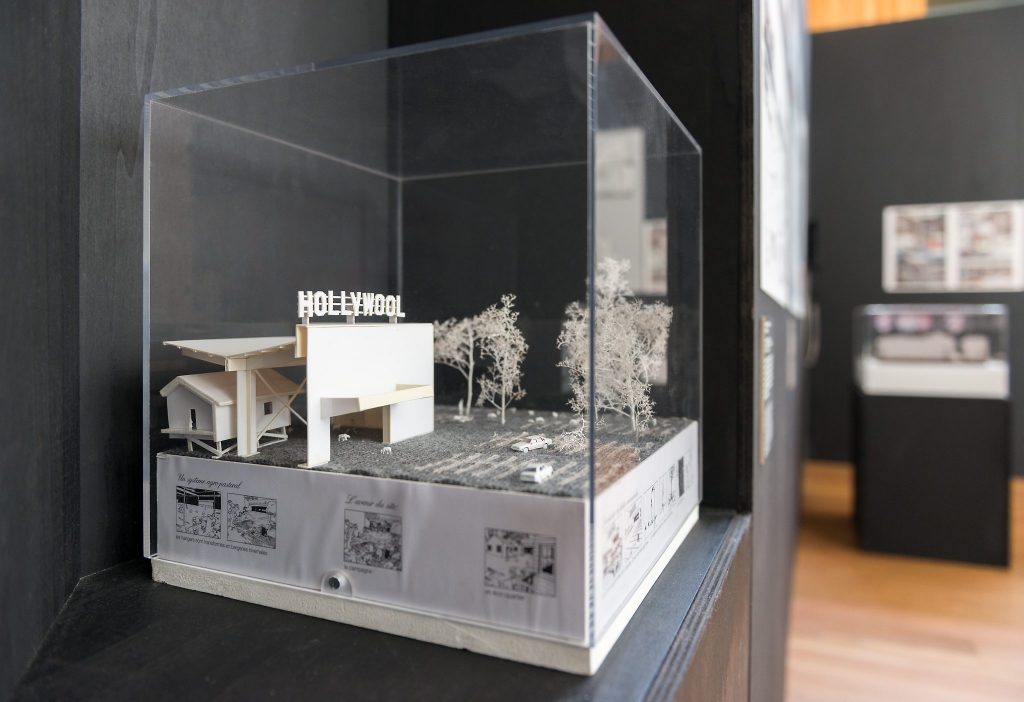
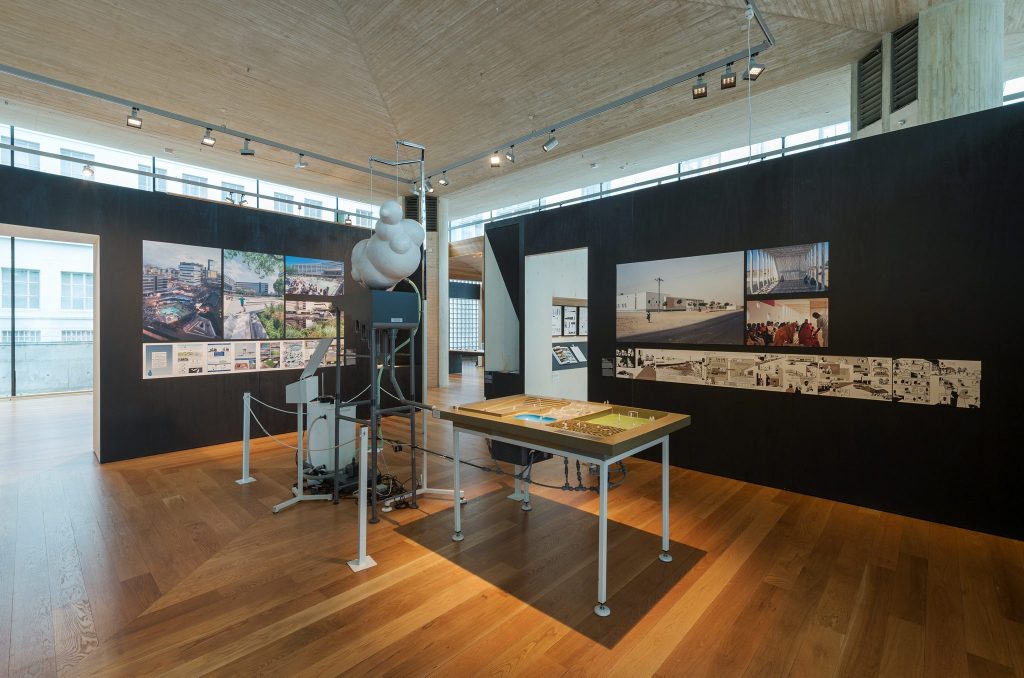
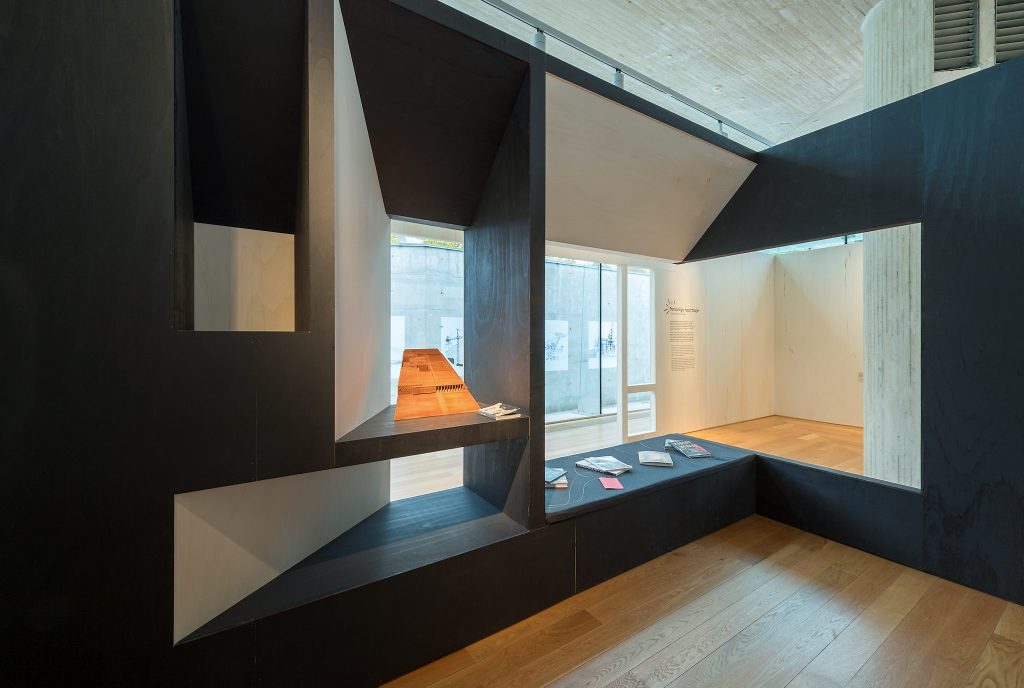

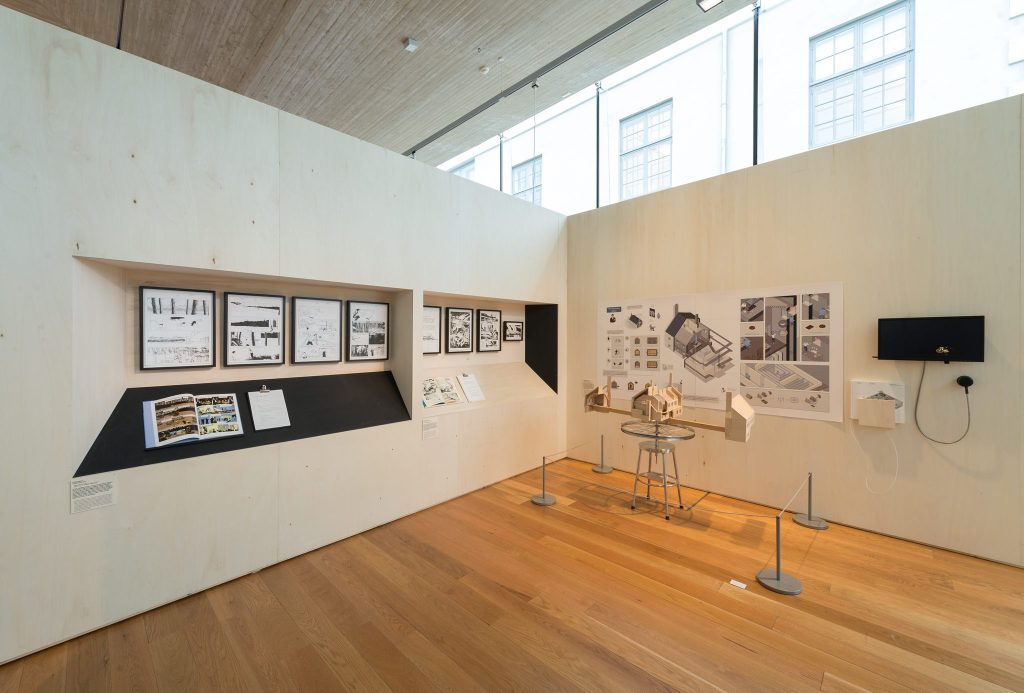
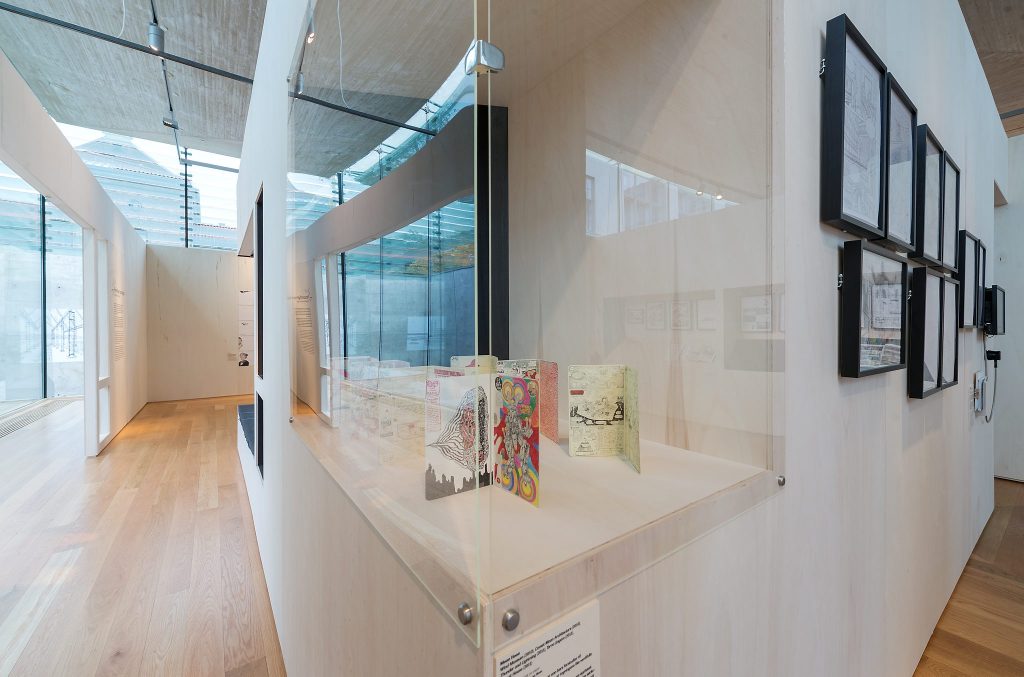
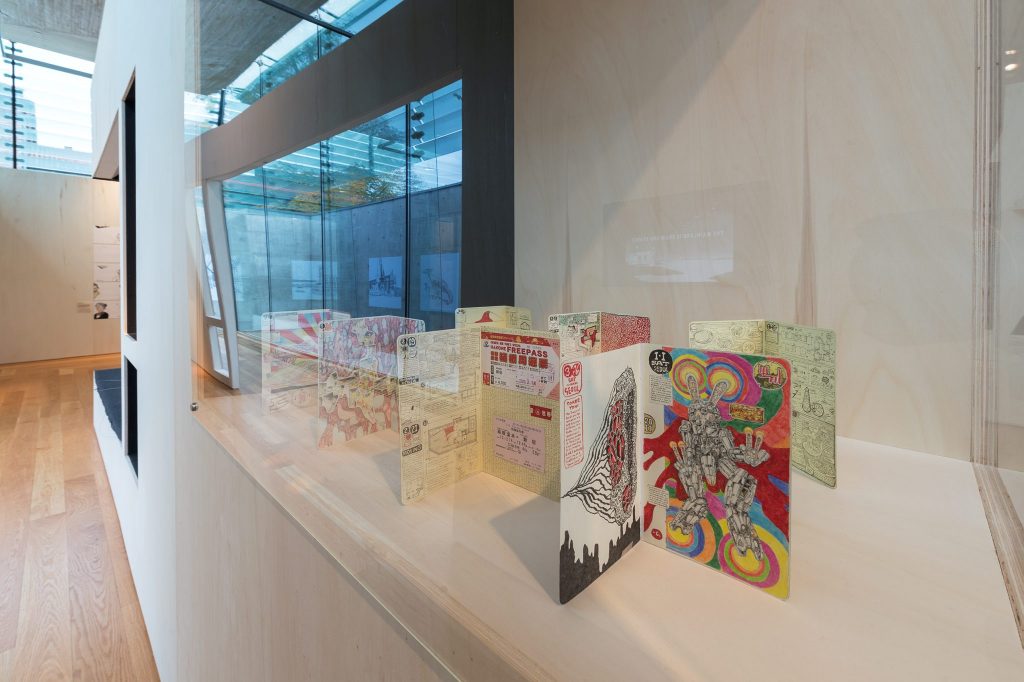
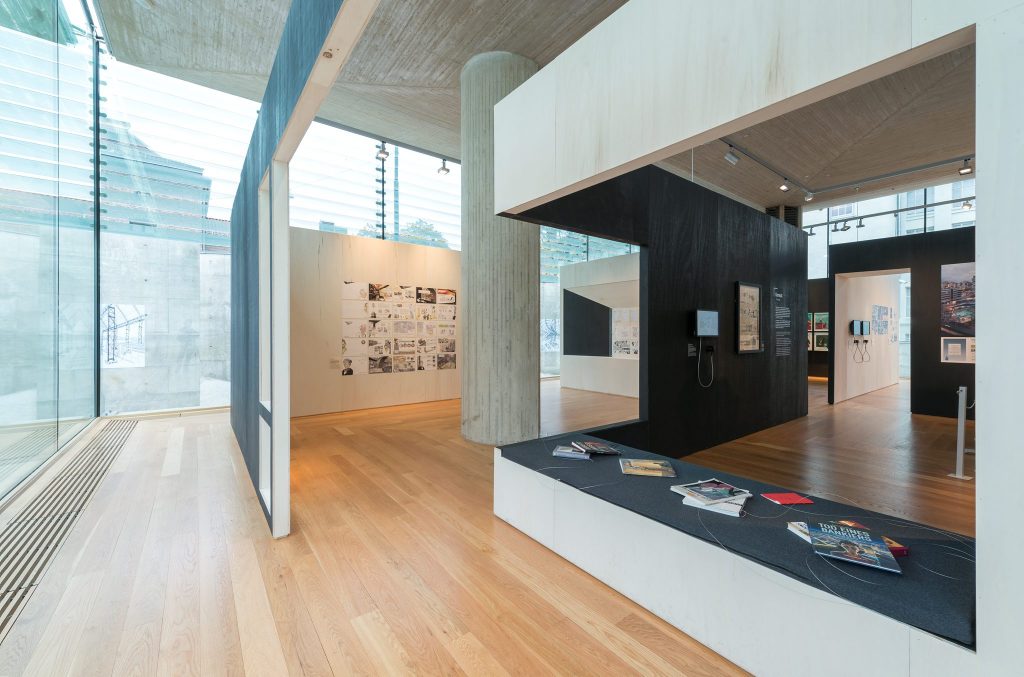
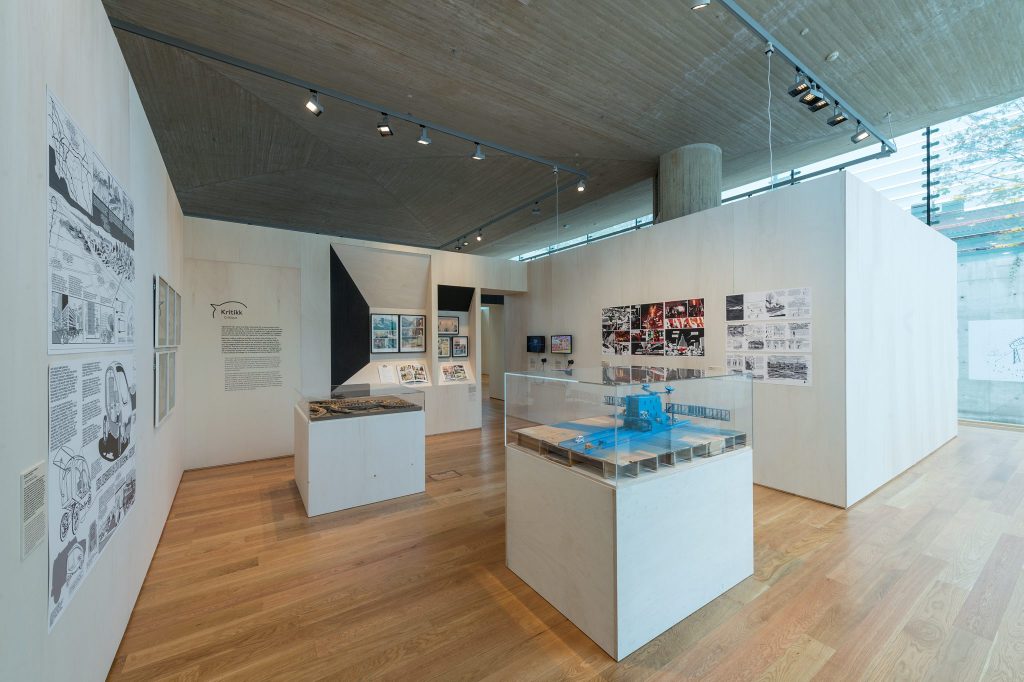
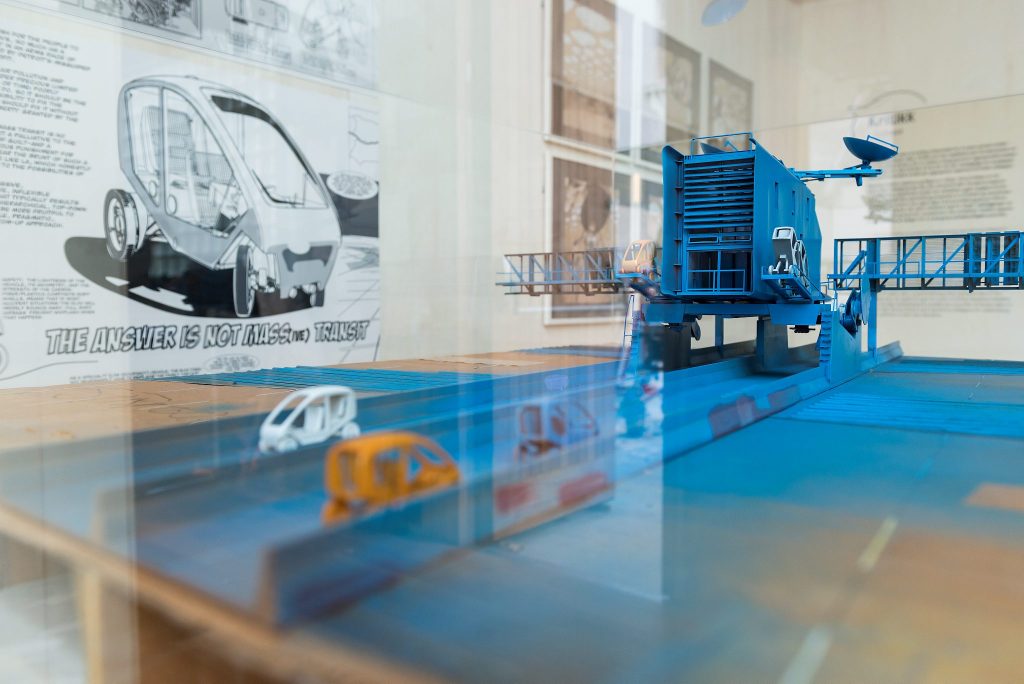
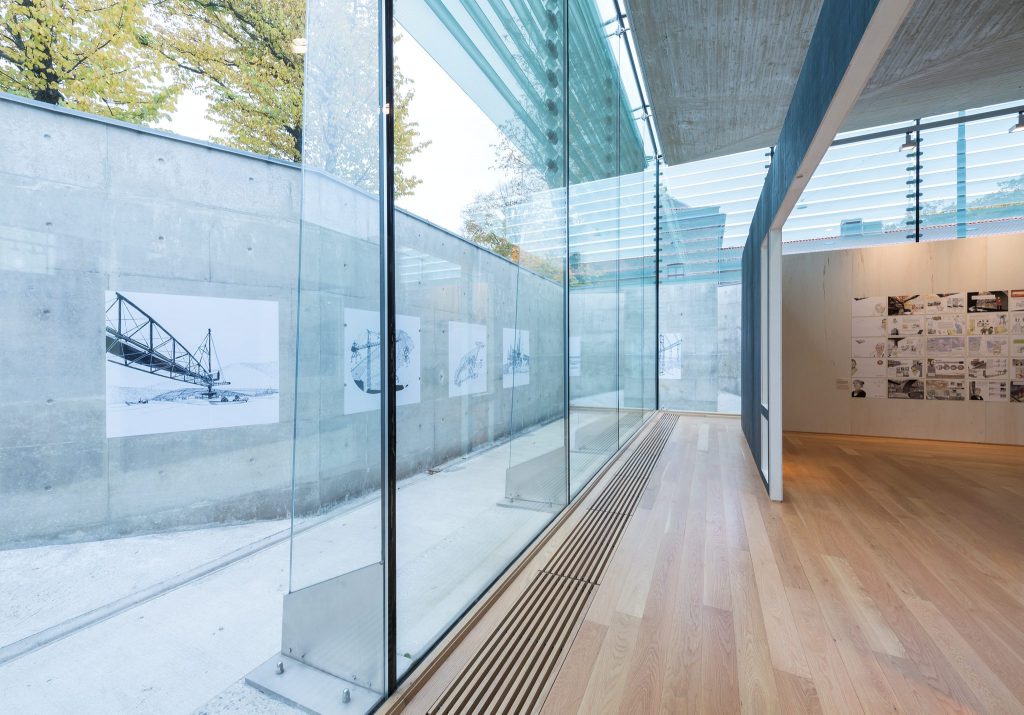
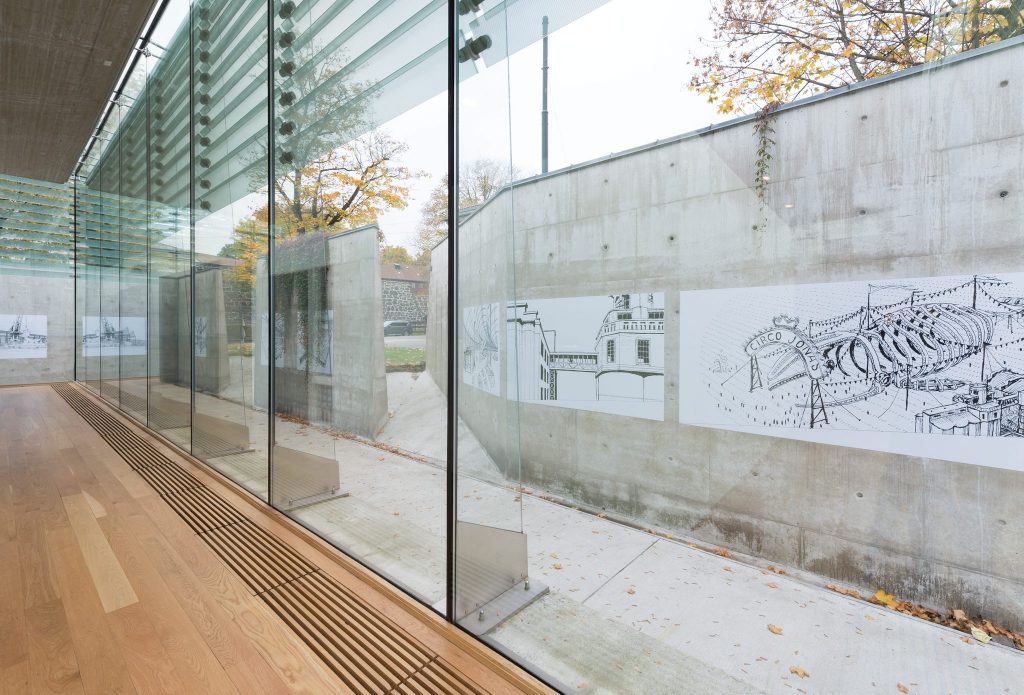
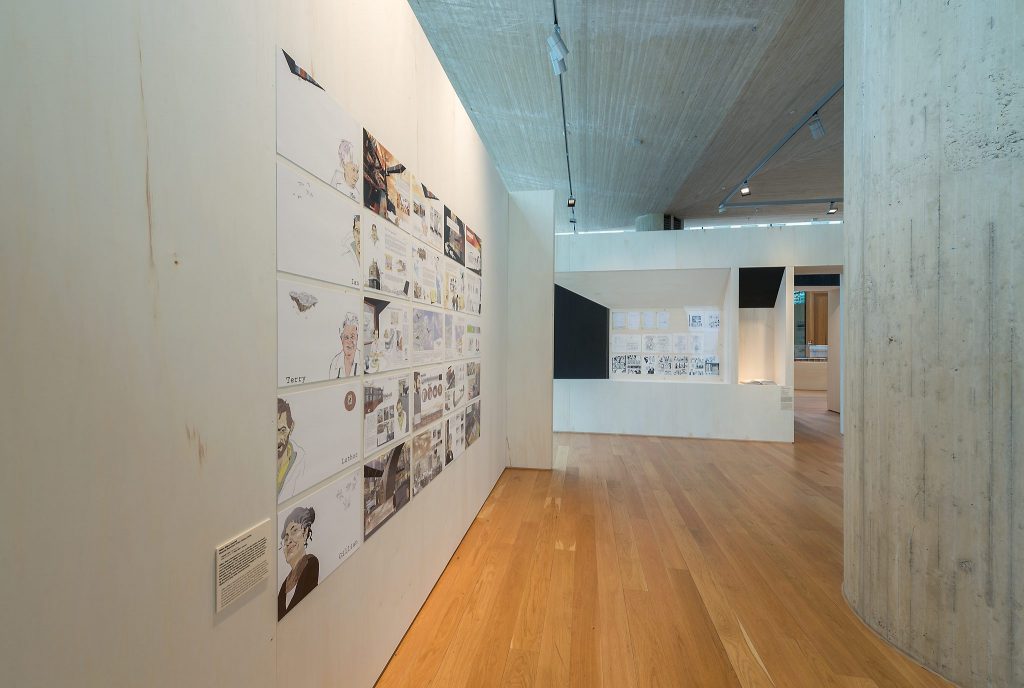
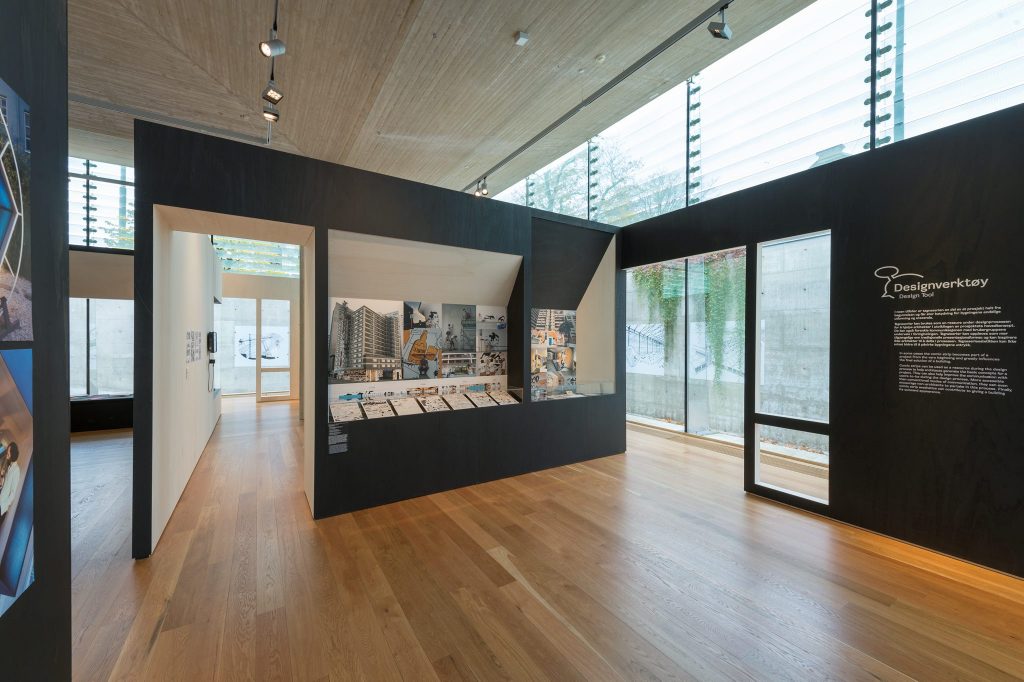
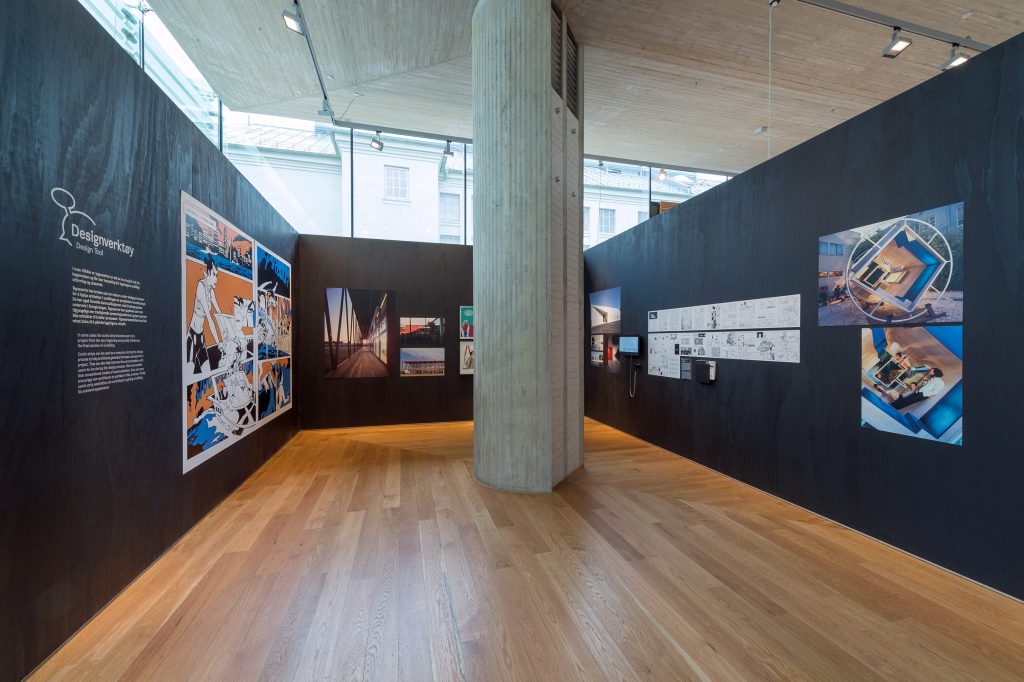
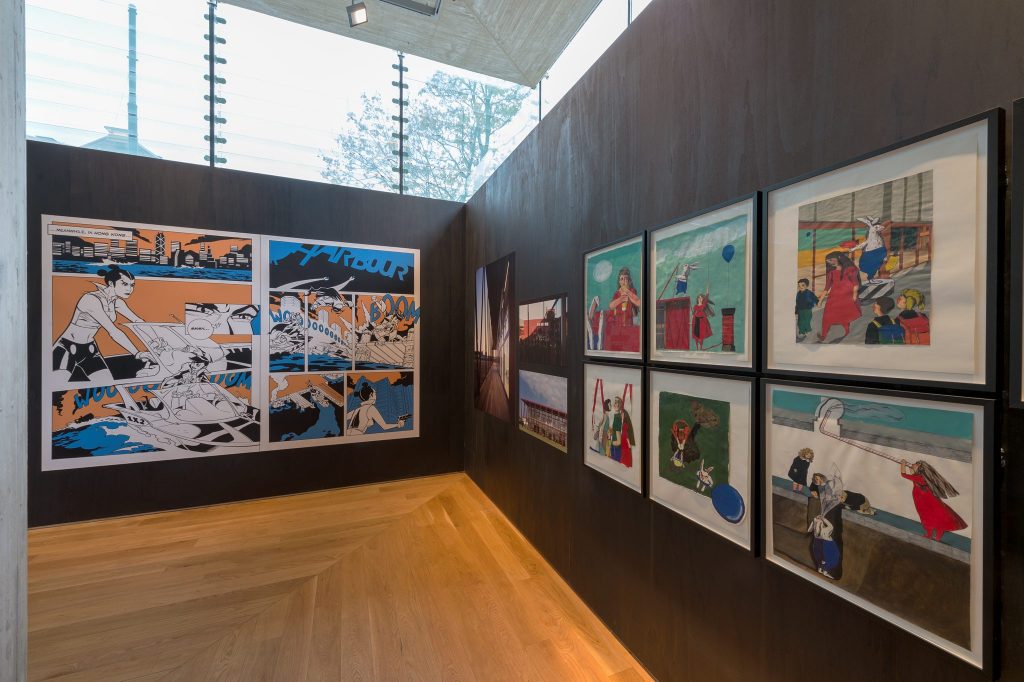
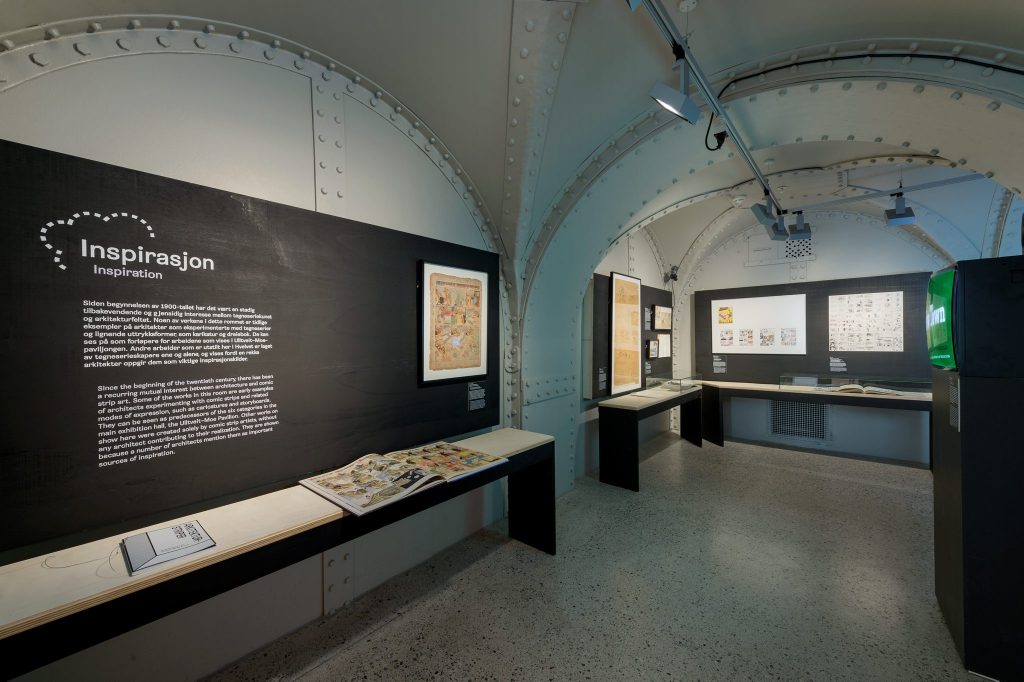
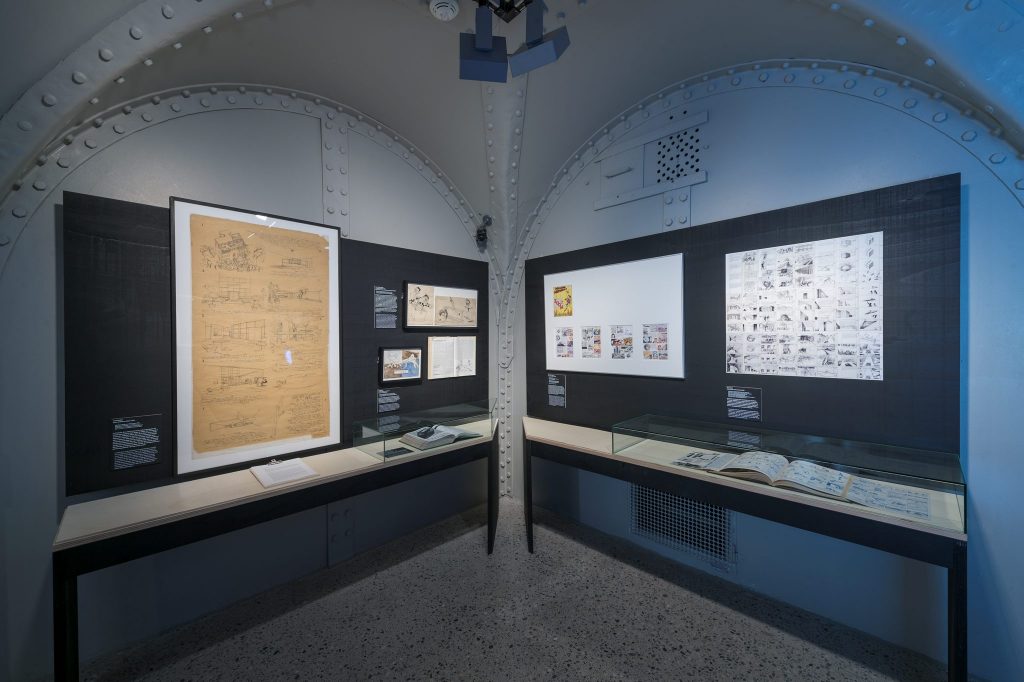
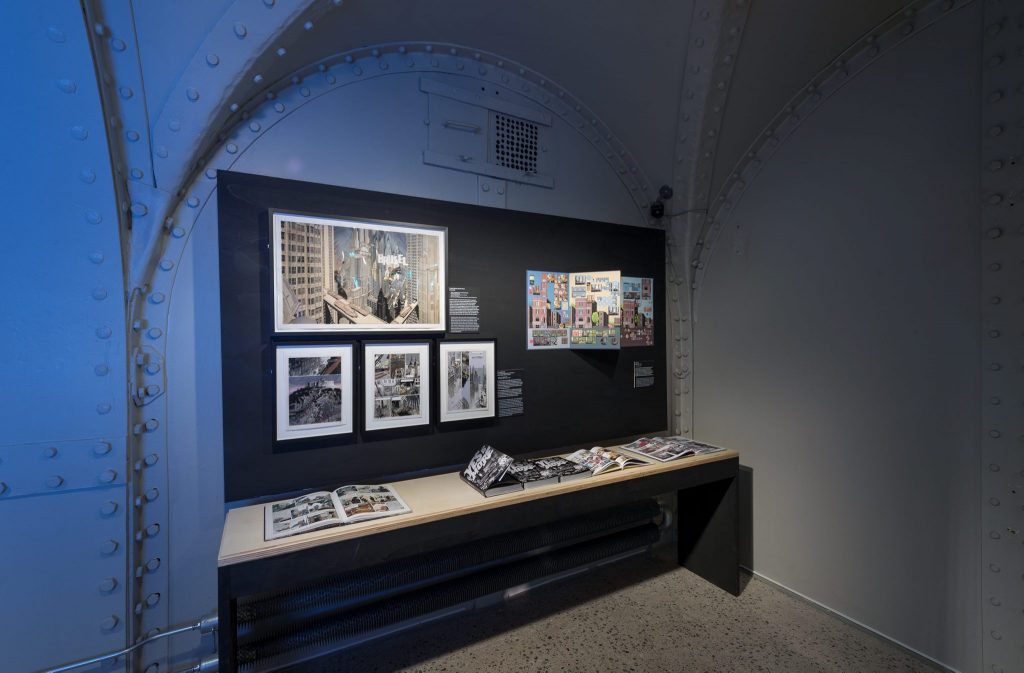
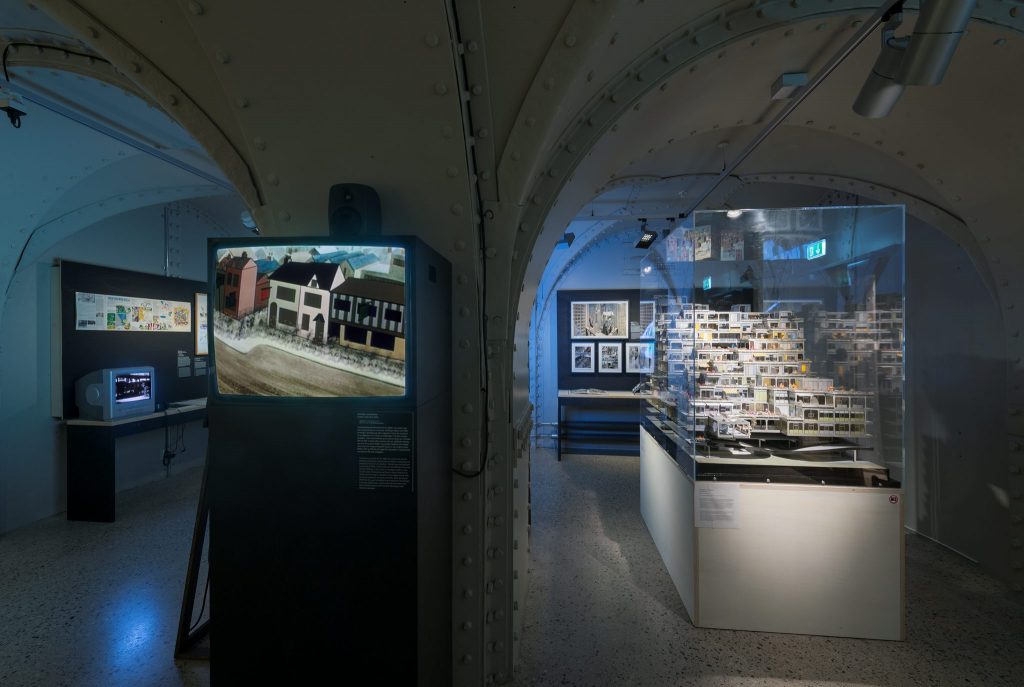
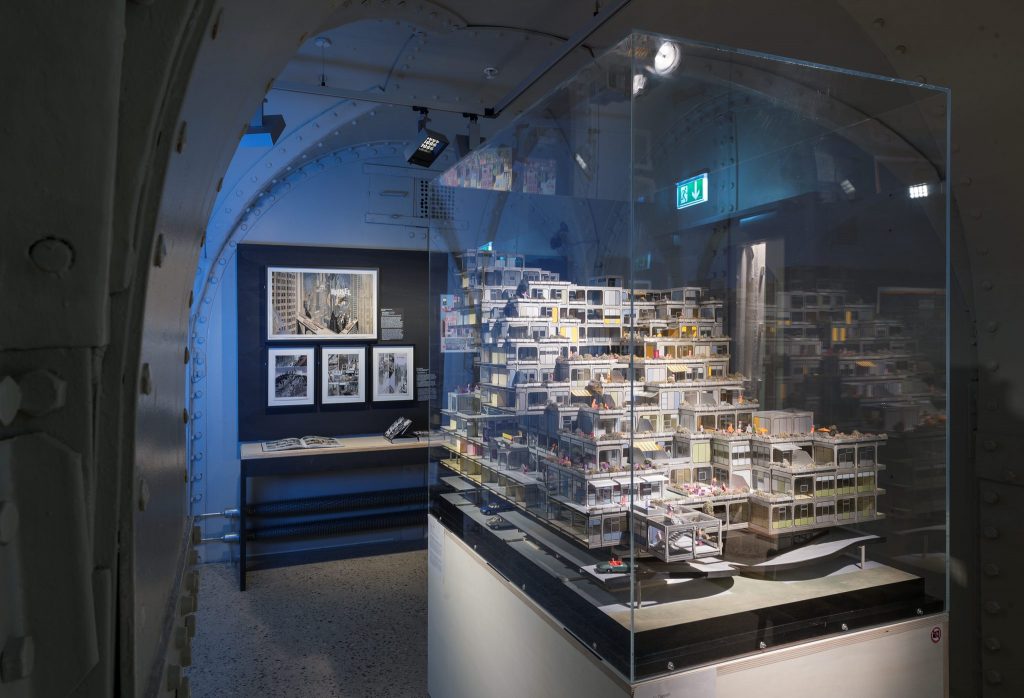
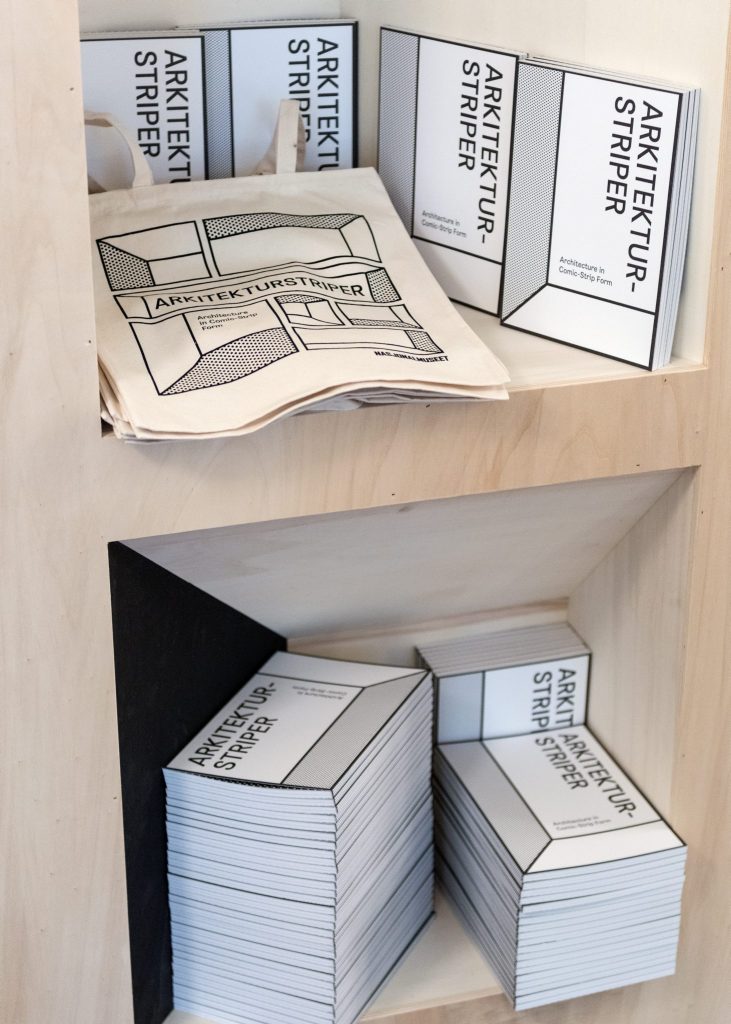
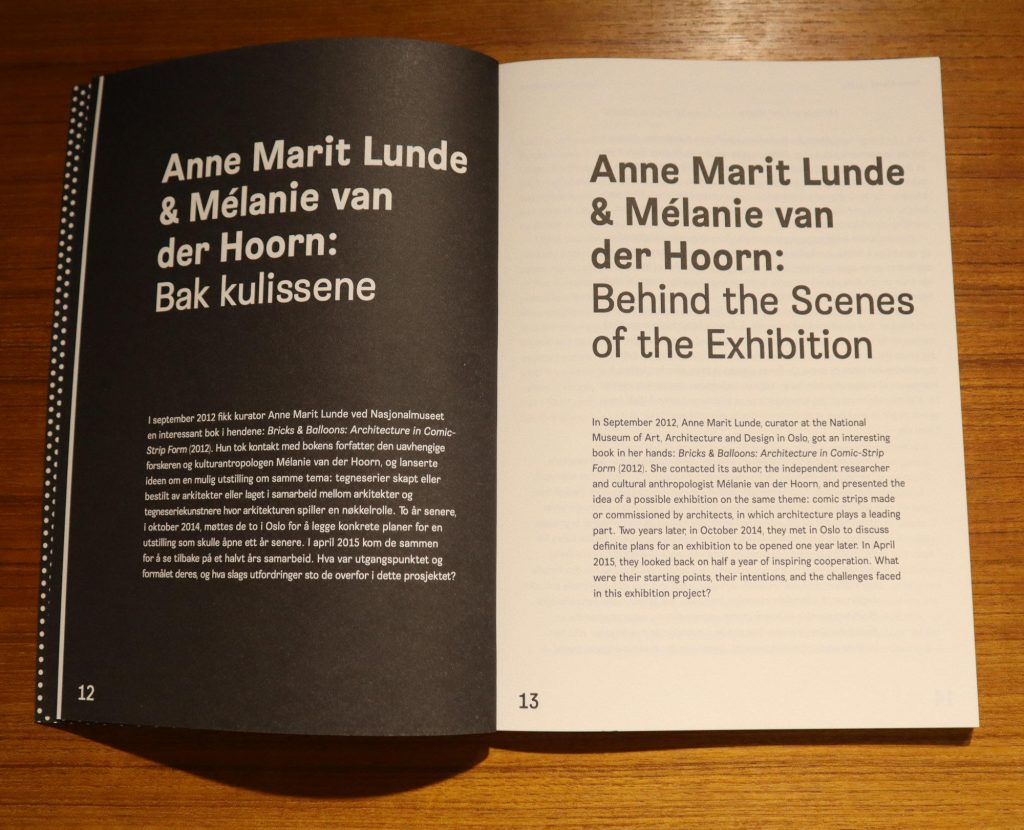
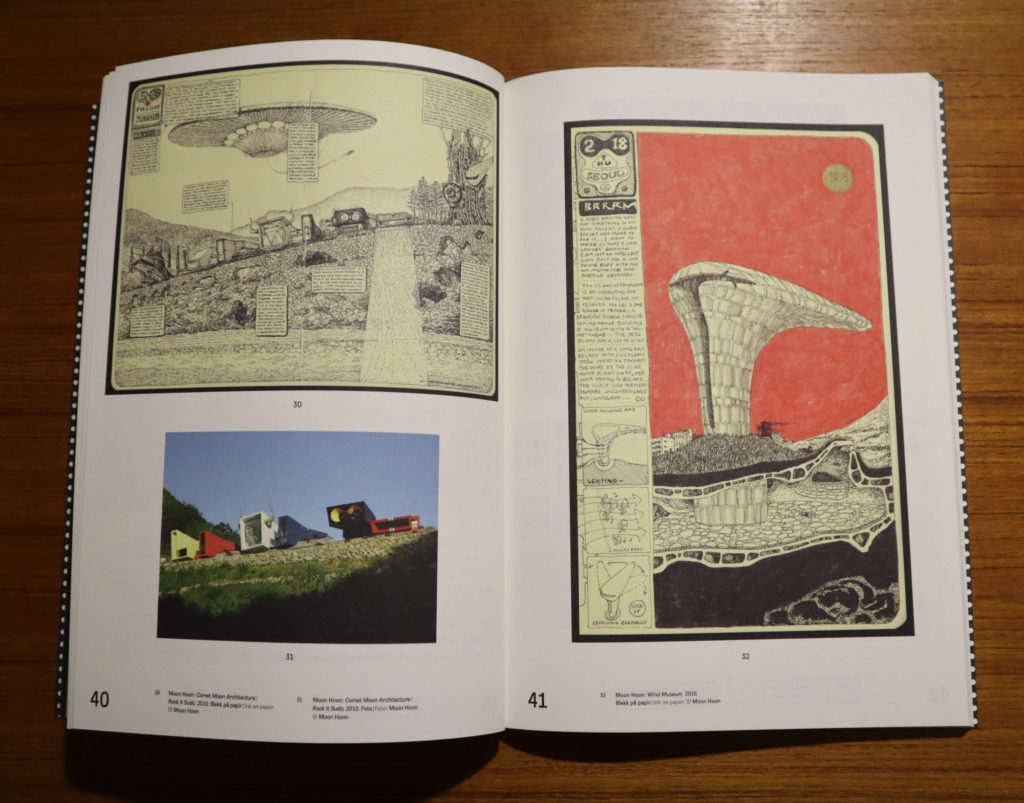
On the occasion of the exhibition, the National Museum published the exhibition catalogue Arkitekturstriper: Architecture in Comic-Strip Form ISBN 978-82-8154-106-1 (EN/NO)
The catalogue contains the transcription of a dialogue between the two curators Anne Marit Lunde and Mélanie van der Hoorn, in which they explain their concept, starting points, intentions as well as the challenges they faced with the project of the exhibition. In the book, portraits of six architects and firms are included who have regularly used the comic-strip form and continually reflect upon its potential. The portraits give an impression of their motivations, approaches, narratives and graphic diversity. The book includes images from most of the works shown in the exhibition.
Selected reviews:
- «Tegneserier skal gjøre det lettere å forstå arkitektur», Osloby, 04.10.2015
- «Arkitekturstriper på Nasjonalmuseet – Arkitektur», Kulturkompasset, 05.10.2015
- «Tegneserier og arkitektur», NRK P2 Kulturhuset, 06.10.2015
- «Utfordrer arkitekturformidlingen», Arkitektnytt, 08.10.2015
- «Arkitekturstriper», Kreativt forum, 08.10.2015
- «Utstilling: Arkitekturstriper», KOTE, 10.10.2015
- «Mona Pahle Bjerke anmelder «Arkitekturstriper»», NRK P2 Kulturnytt, 13.10.2015
- «Comics in architecture, architecture in comics.», Livegreen, 07.10.2015
- «Trenger arkitektur tegneserier?», Serienett, 12.10.2015
- «Exhibition: Architecture in Comic-Strip Form», ArchDaily, 13.10.2015
- «Urbane striper», Dagbladet, 24.10.2015
- «Architecture in Comic-strip form», d’a, 26.10.2015
- «Nye vinduer», Morgenbladet, 30.10.2015
- «Amazing Building Adventures!», The New York Review of Books, 05.11.2015
- «It’s a Bird … It’s a Plane … It’s Architecture», Architect, 05.11.2015
- «建筑的另一面 Architecture in Comic Strip Form – 建筑漫画展», 1626
- «Architecture in Comic Strip Form – 建筑漫画展», Viigee
- «Architecture in Comic-Strip Form», Archatlas, 08.11.2015
- «Architecture in Comic Strip Form – 建築漫畫展 分鏡、圖畫、擬聲詞表達建築的另一面», Hypebeast, 09.11.2015
- «Architecture in Comic-strip form: la mostra a Oslo», C4 Comic, 17.11.2015
- «Arkitektur i rute», Dagens Næringsliv, 26.11.2015
- «Arkitekturstriper. Un’ambiziosa mostra su architettura e fumetto, a Oslo», Fumetto Logica, 27.11.2015
- «Architecture in Comic-Strip Form», Ikuku, Oktober 2015
- «Arkitekturstriper», Casabella
- «What’s On? Architectural Exhibitions, December 2015 edition», Arcspace, 03,12,2015
- «Arkitekturstriper», Aktiv i Oslo
- «Architecture in Comic-Strip Form», Scandinavian-architects
- «Fumettopoli, la città su carta», Corriere della Sera, 22.12.2015
- «Arkitekturstriper – en nytenkende utstilling», Empirix, 28.12.2015
- «Streker som bygger hus», Le Monde diplomatique, 01.2016
